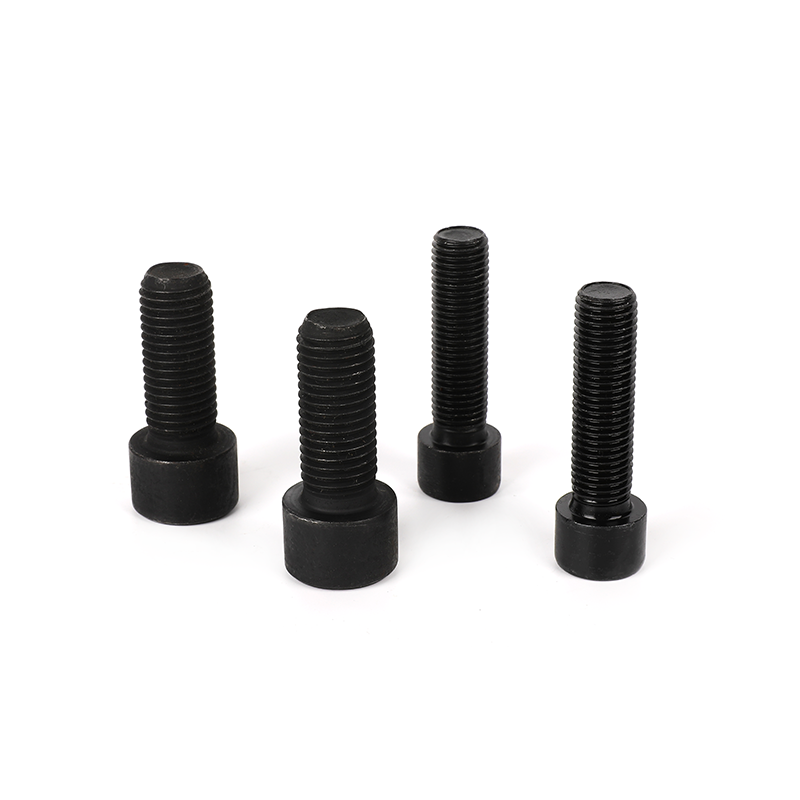Room 102, Building 13, Area A, Wanyang Zhongchuang Park, Ganyao Town, Jiashan County, Zhejiang China.

Checking the corrosion, thread wear and looseness of Hexagon Head Screws is the key to ensure their long-term stable operation. Hexagon Head Screws may be affected by environmental factors (such as moisture, salt, temperature changes, etc.) during long-term use, resulting in corrosion, thread wear or loosening, which in turn affects the safety and reliability of the connection.
Corrosion is one of the most common problems of Hexagon Head Screws in use, especially in humid, corrosive gas or salt spray environments. Corrosion not only reduces the strength of the screw, but also affects the meshing of its threads, resulting in loosening or failure.
First check the outer surface of the Hexagon Head Screw, especially the threaded part and the screw head. The corroded screw surface usually has red rust (for iron substrates) or white powder (for materials such as aluminum alloys). For stainless steel screws, spots or discoloration may appear on the surface.
Check the surface of the screw for peeling, cracks, pores or other damage. Corrosion can cause metal to fall off the surface of the screw, forming cracks, further reducing the strength of the screw.
The parts where the screws connect to the accessories are particularly susceptible to corrosion. Check for corrosion near the connection points. These areas are often overlooked, but corrosion will directly affect the strength of the connection.
Use special corrosion reagents (such as the moisture test method) or immersion method to check for hidden corrosion on the surface of the screws. Reagents can help detect some corrosion that cannot be detected by surface inspection.
For hexagonal head screws used in special environments, ultrasonic or eddy current flaw detection instruments can be used for non-destructive testing to detect whether there is corrosion or other defects inside.

Regularly evaluate the environmental conditions in which the screws are used, such as temperature, humidity, salt concentration, etc. Especially in highly corrosive environments such as marine or chemical plants, corrosion must be checked more frequently.
Thread wear will cause the locking ability of hexagonal head screws to decrease, and in severe cases, it will cause connection failure or screw stripping. Checking thread wear is another important part of ensuring that the screws are working properly.
Visually inspect the shape and integrity of the threads to find out whether there is severe wear, deformation, stripping or missing. If the thread shape is irregular or the local wear is severe, it means that the screw has lost its original tightening performance.
Gently touch the surface of the thread with your fingers to feel whether it is smooth and uniform. If there are irregular protrusions or depressions on the thread surface, it indicates possible wear.
You can use a thread gauge (such as a plug gauge or ring gauge) to check the accuracy of the thread. If the thread cannot pass the gauge smoothly, it means that the thread tolerance is too large or it has been worn, which may cause a loose connection.
Match the screw with the corresponding nut or hole to check whether it can be tightened smoothly. If you feel sticking or too much resistance, it may be that the thread is worn or damaged.
Verify the load-bearing capacity of the screw through load testing. If the load-bearing capacity of the screw is significantly reduced, it may be caused by thread wear. At this time, you can consider replacing the screw to avoid further use of the severely worn screw.
If the screw is under dynamic load for a long time, fatigue testing can be used to simulate the use environment and test the performance of the thread under cyclic load.
Through these inspection and maintenance methods, the service life of the hexagon head screw can be effectively extended to ensure its stability and safety at work. In actual operation, the inspection frequency and maintenance strategy should be adjusted according to the specific application scenario to ensure that the equipment is always in the best operating condition.

Fix anchorbolts include bolts, washers, nuts and 4PCS cylindrical shields. By tightening the bolts, the shields tubes expand and the components can be...
See Details
Flange bolts are specially used to tightly connect pipes and components with flanges. We produce flange bolts are solid t and durablethat, compling wi...
See Details
The Grade 8.8 black oxide full-thread hexagon socket bolts have an internal hex design and needs to be used with a wrench with a hex head. Its full th...
See Details
Grade 8.8 black oxide full-thread hexagon bolts is a very common fastener and requires a wrench or hex wrench to tighten it. Our hex head bolt meet th...
See Details
This product is made of high-quality carbon steel and undergoes a rigorous heat treatment process. It has high strength, good elasticity and toughness...
See Details
This 304 stainless steel plain full-thread hexagon bolt is a kind of fasteners made of high-quality stainless steel material and has corrosion resista...
See Details
This plain round flat head weld shoulder bolt is a fastener suitable for a variety of welding applications. Its flat head and round head design makes ...
See Details
This Grade 12.9 zinc plated countersunk head square neck plow bolt has the advantages of high precision, high operability, high strength, and high ten...
See Details